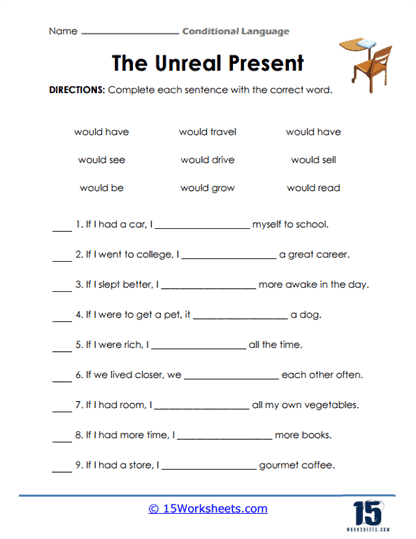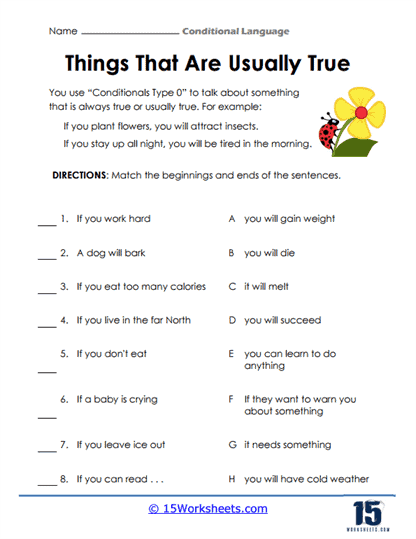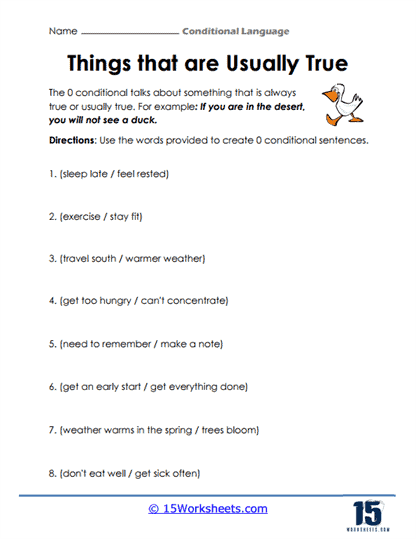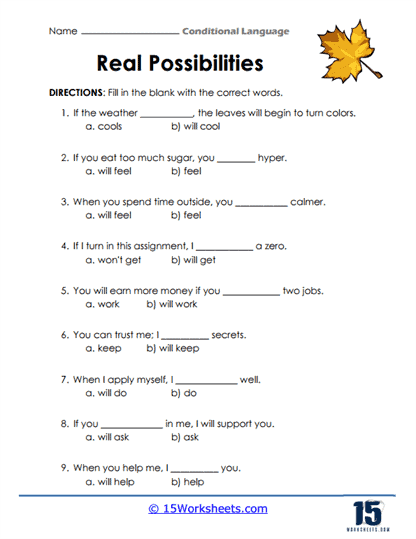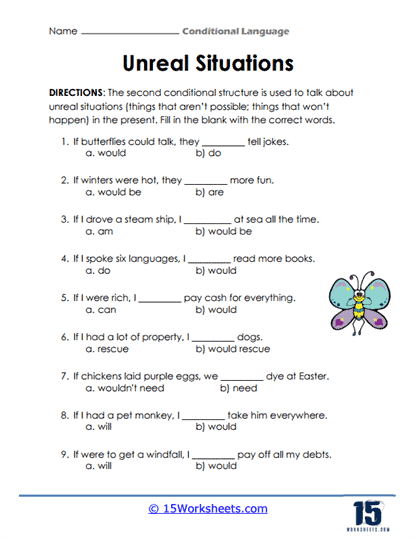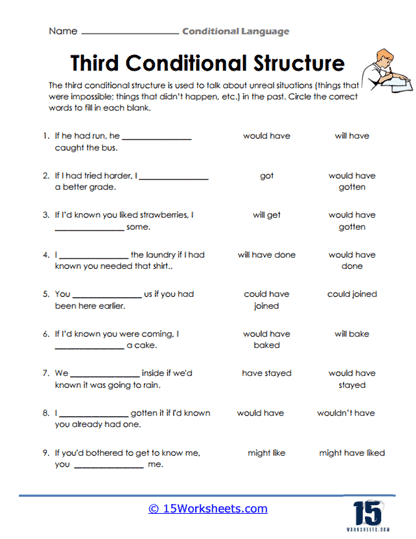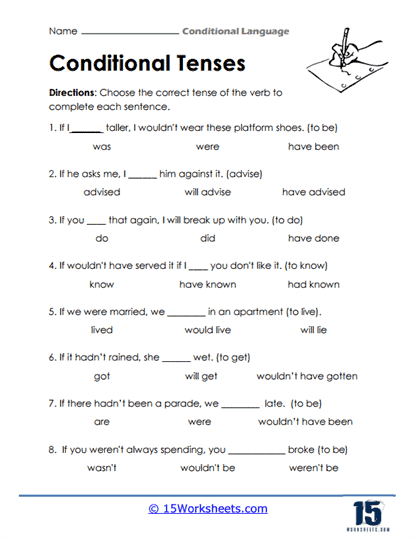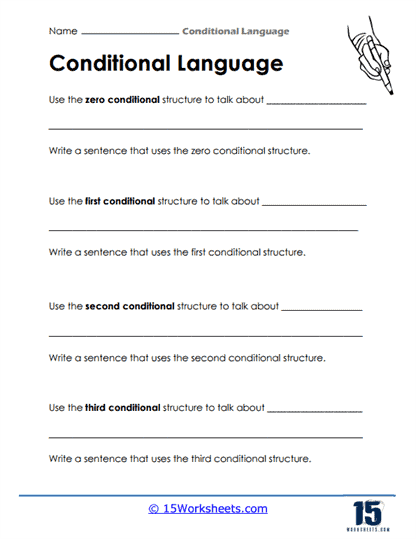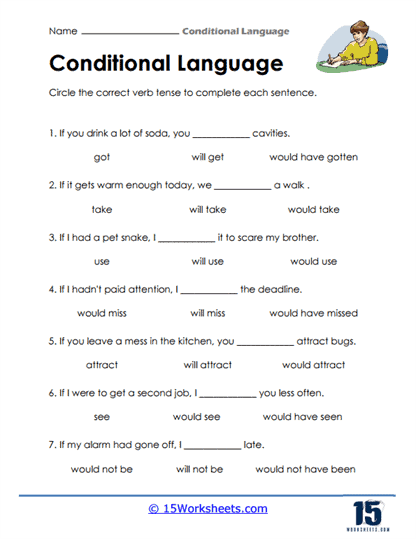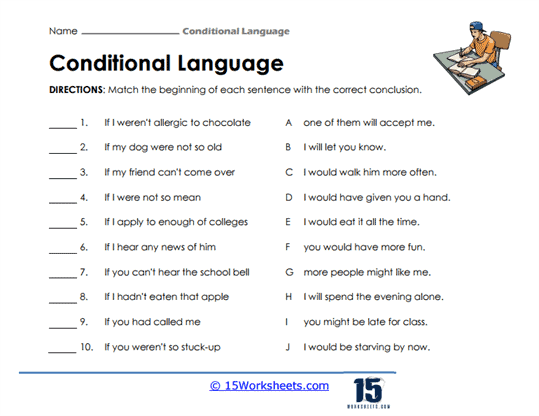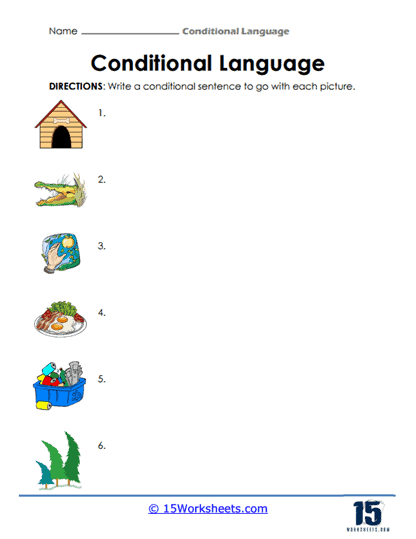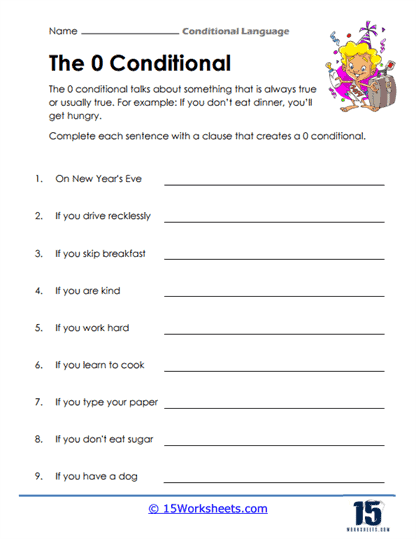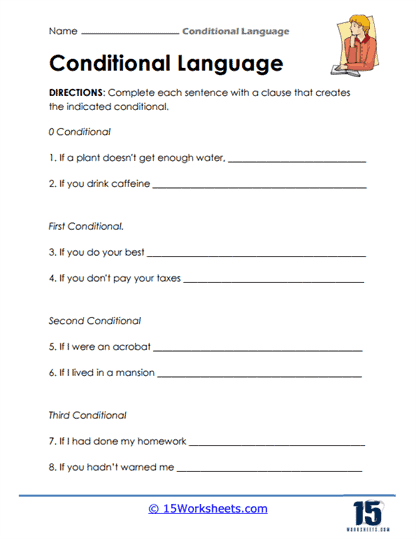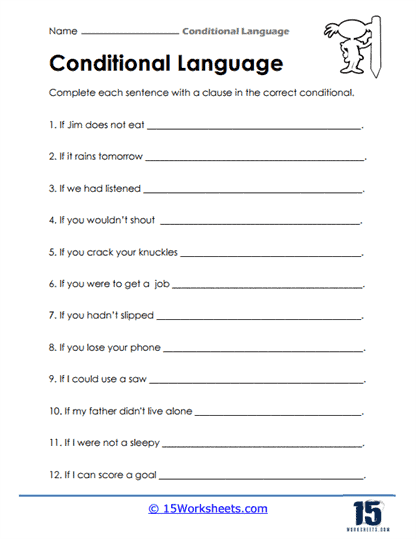Conditional Language Worksheets
All About These 15 Worksheets
These conditional language worksheets are designed to help students understand and practice the use of conditionals in English. Conditionals are used to talk about hypothetical or imaginary situations and their possible consequences, and they are an important part of everyday communication in English.
These worksheets include a variety of exercises that instruct students to use different types of conditional language correctly. Some examples of these activities include:
- Gap-filling exercises – Students complete sentences by adding the correct conditional form of the verb.
- Sentence construction exercises – Students make their own sentences using different conditional forms.
- Matching exercises – Students match two dependent clauses to form a sentence that uses conditionals correctly, or match the correct conditional form the verb to a sentence.
- Sentence completion exercises – Students complete sentences by adding a dependent clause which includes the correct usage and form of conditionals as instructed.
In addition to these exercises, worksheets on conditional language may also include explanations of different types of conditionals, such as the zero conditional, first conditional, second conditional, and third conditional.
Through these worksheets, students will be able to:
- Understand the function of conditionals and its different types (zero, first, second, and third);
- Create their own sentences using the different types of conditionals;
- And learn the correct form of conditionals when used in different types of sentences.
In summary, these worksheets on conditional language provide students with an opportunity to practice and reinforce their understanding of this important aspect of English grammar. By using these worksheets, students can improve their ability to express hypothetical situations, make suggestions, and give advice in English. This can help them become more confident and effective communicators in both spoken and written English.
What are Conditionals?
Conditionals are a type of sentence structure in English that express a hypothetical or imaginary situation and its possible consequence. There are several types of conditionals in English, each with its own structure and usage.
- Zero conditional – The zero conditional is used to talk about things that are always true, like scientific facts or general truths. It is formed using the present simple in both the if-clause and the main clause, and the conjunction “if.” Example: “If you heat water to 100 degrees, it boils.”
- First conditional – The first conditional is used to talk about possible future events or situations that are likely to happen. It is formed using the present simple in the if-clause and the future simple (or modal verb + infinitive) in the main clause. Example: “If it rains, I will stay at home.”
- Second conditional – The second conditional is used to talk about hypothetical or imaginary situations in the present or future that are unlikely or impossible. It is formed using the past simple in the if-clause and the modal verb “would” (or “could,” “might,” or “should”) + base form of the verb in the main clause. Example: “If I won the lottery, I would buy a house.”
- Third conditional – The third conditional is used to talk about hypothetical or imaginary situations in the past that did not happen. It is formed using the past perfect in the if-clause and the modal verb “would” (or “could,” “might,” or “should”) + have + past participle in the main clause. Example: “If I had studied harder, I would have passed the exam.”
In addition to these main types of conditionals, there are also mixed conditionals, which combine different types of conditionals in the same sentence. Understanding and using conditionals correctly is an important part of English grammar, as they are frequently used in everyday conversation, writing, and academic contexts.

